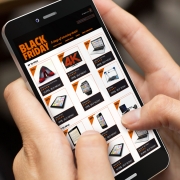Scheduling emails, especially those going to large audiences, can be a daunting task. After all, how can you be 100% sure that your recipients are receiving the right communication, at the right time, without any glitches? The truth is, mistakes do happen – but there are a number of measures you can put in place that will make sure you get it right as much as possible. I’ve put together something I like to call your ‘preflight checklist’ *cue aeroplane noises*. It will help you get your ducks in a row before pressing that all important send button.
Test emails
Sending test emails is one of the best ways of checking how your email will display for your customers. The part where people trip up is by sending the test emails to one email account (usually themselves) and marking this down as the email having been fully tested. The issue with doing this is you end up only seeing the email on one email client (i.e. Gmail), and perhaps only on one device – normally desktop.
There are a number of ways you can view your emails on multiple email clients. The most obvious (yet time consuming) way is to have different email accounts with different email clients (e.g. having an Outlook, Hotmail and Gmail) and send tests to each of those accounts. If you have no other options then this will, at least, give you insight into several views your customers will see.
However, the best (and more efficient) way I’ve found to test emails is through a tool called Litmus, which allows you to check how your emails will look across a wide variety of email clients and apps. There are tools similar to Litmus out there which are based around the same concepts, all ranging in price and functionality. It’s definitely worth having a look around and finding the best fit for you.
Plain text
This one is particularly important if you partake in much B2B mailing. When an email client cannot read a HTML email it will default back to ‘plain text’, which is exactly what it sounds like, lines and lines of basic text without images. Sounds pretty dull right? But what would you prefer, lines and lines of text which your customer can read and get the general message of your email from, or a blank space. Personally I’ve never found blank spaces to be much use in marketing – for one thing ROI on them is rather low…
In this tech-savvy age, most email service providers, will provide you with a way to auto-generate your plain text based on the HTML it can see. If your current system doesn’t provide this feature… come have a chat with us at Enabler! You can check how your email will look in plain text in a couple of ways. The best way I’ve found is to either view it through Enabler’s email marketing software, or send yourself a test and turn off your email client’s ability to read HTML temporarily.
Date and time
This may sound incredibly basic, but have a think about when you are planning on sending out your communication. If it’s B2B, don’t try and send on a Saturday, no one will read it. If you’re B2C, have a look at the success of previous communications and plan around it. Think about if your message has a specific time frame to it (e.g is it a limited time offer). When you come to actually schedule the send, double check all these things!
Sending List
Choosing who will receive your email is really important. When choosing who to send to, think:
“Will this customer find the content of the email:”
-
Relevant
-
Useful
-
Interesting
If you can’t satisfy that criteria, then don’t bother sending the email, chances are they will not open, and even if they do open, they wont click, call or respond to CTA’s in the way you want. Once you’ve decided who you will send to, make sure you segment the data properly in your email database, and please name it something you are going to remember at a later date!
Dynamic content tests
This is only applicable if you are using dynamic content in your emails. With dynamics, it can be tough to figure out how each individual customer will view your email, so testing the variations is incredibly important.
Email clients such as Gmail have a really handy way of doing this. All you need to do is set up multiple email addresses for yourself which have ‘+’ in the email address, each with a different variation associated with the email address. For example, if you market for a pet insurer and want to test different content variants in a pet-orientated email, you might have:
-
firstname.lastname@gmail.com
-
firstname.lastname+cat@gmail.com
-
firstname.lastname+dog@gmail.com
-
firstname.lastname+rabbit@gmail.com
In this situation you would have assigned yourself a cat profile to the +cat email address, a dog profile for the +dog etc. What this allows you to do is have multiple versions of the same email sent to your inbox, meaning you can test multiple versions of the same email without having to constantly change your settings within the system.
Send logs
This is really the holy grail of avoiding send anxiety, and it’s something we do in my team at Enabler. Send logs provide a safety check before you hit the send button. They force you to look at each of your settings right from ‘am I sending the right template’ to ‘what time is it going’. For added security at this stage, get a colleague to double check it for you.
If you want to see an example of the send log we use at Enabler, for inspiration, get in touch and we will happily send one across.
I really wish I had a fancy acronym to give you to remember all that… hang on let me give it a go…
T.P.D.S.D.S.
Hmm – Nope, not enough vowels. Oh well, have a go at making your own one up to help you remember, but if you can’t and you want a reminder, read this blog again, or give me a call, we’re always here to help at the Enabler team!
Happy sending email nerds!














